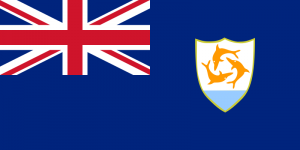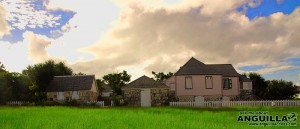Anguilla

Anguilla Tourism
Travelers come to Anguilla for the natural beauty and quiet atmosphere, the 33 sparkling white sand beaches, art galleries, and other historical and cultural offerings. For seaside vacation experiences, the beach options are seemingly endless: Rendezvous Bay, Cove Bay and Mead’s Bay beckon with long curved strands of sand. Smaller pocket beaches include Limestone Bay, known for its snorkeling, and Little Bay, reached only by boat. Captain’s Bay and Junk’s Hole Bay are more remote. Shoal Bay East is undoubtedly the island’s most popular beach while Scrub Island, Prickly Pear and Dog Island are excellent snorkeling destinations. At the MoonSplash Music Festival in March, Bankie Banx serves up three days of music, food and fun. In May, a regatta features seven yacht races over three days. Carnival in August is beloved for parades, calypso competitions and traditional wooden-boat racing. November’s Tranquility Jazz Festival brings performances by regional and international musicians.
Anguilla (/æŋˈɡwɪlə/ ang-gwil-ə) is a British overseas territory in the Caribbean.[3] It is one of the most northerly of the Leeward Islands in the Lesser Antilles, lying east of Puerto Rico and the Virgin Islands and directly north ofSaint Martin. The territory consists of the main island of Anguilla itself, approximately 16 miles (26 km) long by 3 miles (5 km) wide at its widest point, together with a number of much smaller islands and cays with no permanent population. The island’s capital is The Valley. The total land area of the territory is 35 square miles (90 km2), with a population of approximately 13,500 (2006 estimate).
Anguilla has become a popular tax haven, having no capital gains, estate, profit or other forms of direct taxation on either individuals or corporations. In April 2011, faced with a mounting deficit, it introduced a 3% “Interim Stabilisation Levy”, Anguilla’s first form of income tax.
Etymology
The name Anguilla derives from the word for “eel” in any of various Romance languages (modern Spanish: anguila; French: anguille; Italian: anguilla; Portuguese: enguia; Romanian anghilă), probably chosen because of the island’s eel-like shape.
Anguilla was first settled by Amerindian tribes who migrated from South America. The earliest Amerindian artifacts found on Anguilla have been dated to around 1300 BC, and remains of settlements date from 600 AD. The date of European discovery is uncertain: some sources claim that Columbus sighted the island in 1493, while others state that the island was first discovered by the French in 1564 or 1565.
Anguilla was first colonised by English settlers from Saint Kitts, beginning in 1650. The French temporarily took over the island in 1666 but under the Treaty of Breda it was returned to English control. In this early colonial period Anguilla sometimes served as a place of refuge. A Major John Scott who visited in September 1667 wrote of leaving the island “in good condition” and noted that in July 1668 “200 or 300 people fled thither in time of war.” Other early arrivals included Europeans from Antigua and Barbados.
It is likely that some of these early Europeans brought enslaved Africans with them. Historians confirm that African slaves lived in the region in the early 17th century. For example, Africans from Senegal lived in St. Christopher (today St. Kitts) in 1626. By 1672 a slave depot existed on the island of Nevis, serving the Leeward Islands. While the time of African arrival in Anguilla is difficult to place precisely, archival evidence indicates a substantial African presence (at least 100) on the island by 1683.
While traditional histories of the region assume that the English were the first settlers of Anguilla under British rule, recent scholarship focused on Anguilla offers a different view. It places more significance on early sociocultural diversity. The research suggested that St. Christopher, Barbados, Nevis and Antigua may have been important points of origin. Regarding African origins, West Africa as well as Central Africa are both posited as the ancestral homelands of some of Anguilla’s early African population.
During the early colonial period, Anguilla was administered by the British through Antigua, but in 1824 it was placed under the administrative control of nearby Saint Kitts. In 1967, Britain granted Saint Kitts and Nevis full internal autonomy, and Anguilla was also incorporated into the new unified dependency, named Saint Christopher-Nevis-Anguilla, against the wishes of many Anguillians. This led to two rebellions in 1967 and 1969 (Anguillian Revolution), headed by Ronald Webster, and a brief period as aself-declared independent republic. The goal of the revolution was not independence per se, but rather independence from Saint Kitts and Nevis, and a return to being a British colony. British authority was fully restored in July 1971, and in 1980 Anguilla was finally allowed to secede from Saint Kitts and Nevis and become a separate British Crown colony (now a British overseas territory).



